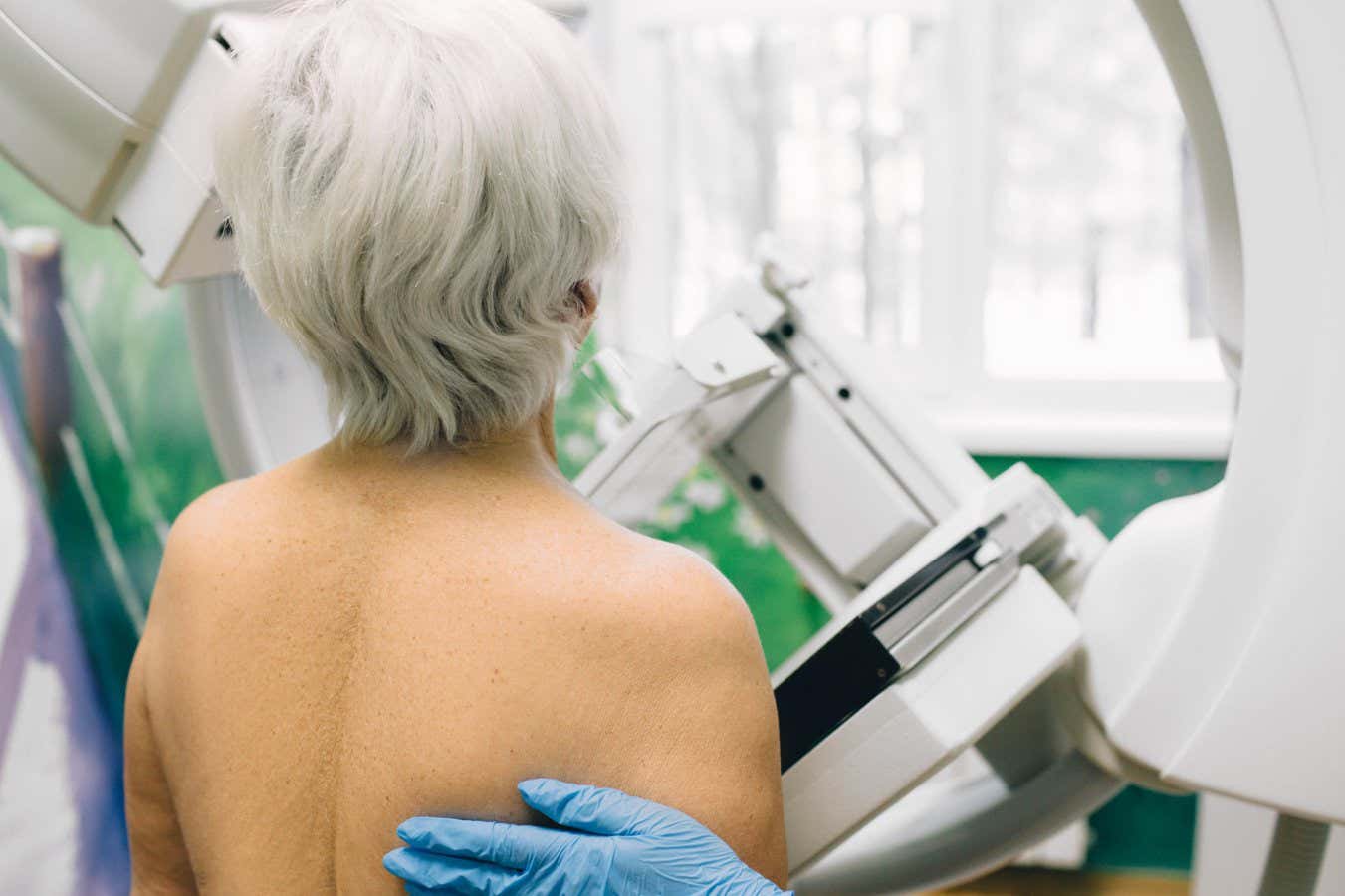A flexible fabric called X-Wear could replace some parts of medical scanners, which would make taking X-rays and CT scans far more comfortable and convenient
Mammograms can be painful, but they may not need to beDaria Artemenko/Alamy
Mammograms can be painful, but they may not need to be
Getting an X-ray can be uncomfortable – you may have to lay still while you’re in pain or have part of your body compressed. But a flexible fabric that makes X-rays easier to detect could eliminate that.
Read moreWe are finally improving prostate cancer diagnoses – here's how
We are finally improving prostate cancer diagnoses – here's how
“Imagine scanning a child’s injury without immobilising them, or enabling pain-free breast exams,” saysLi Xuat the Hong Kong Polytechnic University. She and her colleagues created a textile called X-Wearthat scintillates– meaning it releases light whenexposed to X-rays– which could make this a reality.
Because X-rays are more difficult to detect than visible light, medical and industrial X-rays, as well as CT scans, use scintillating components. These can pick up X-rays after, for example, passing through a limb, converting the rays that emerge into visible light that can then be used to create an image of the body part to show internal detail like broken bones. But the most commonly used scintillators are rigid, which makes the devices they are embedded in bulky and uncomfortable to interact with.
To avoid this, the researchers re-shaped scintillating materials, for instance gadolinium oxide studded with bits of europium, into narrow fibres, which they then wove into fabric.
Xu says that it was a technical challenge to make these fibres flexible while also ensuring they emit enough light to create high-resolution images once they arehit with X-rays. Her team demonstrated that the fabric can be useful for taking dental X-rays – in tests, it made X-Wear conform to the shape of a mouth model made from clay and teeth. It also used it for mammography, where it created an X-Wear bra that eliminated the need for a person’sbreast to be compressedduring imaging, which is standard current practice.
Receive a weekly dose of discovery in your inbox.
Imalka Jayawardenaat the University of Surrey in the UK says that X-Wear’s ability to conform to the body is a big advantage compared with other flexible scintillator designs that are typically film-like and bendy, but can’t wrap around objects. However, he says that detectors for light that X-Wear must be paired with are still flat, which currently limits possible uses of the fabric.
The researchers can produce samples of X-Wear up to around a quarter of a square metre, so before it can be widely used, they will have to scale its production to larger sizes and adapt it to industrial-grade equipment, says Xu.
The team is also working on industrial applications for X-Wear, such as small, flexible devices for inspecting electronics or pipelines for flaws. Xu says thatfirst responders in a disaster zonecould also use X-Wear alongside a smartphone and a compact X-ray source to do on-site scans.
Journal referenceScience AdvancesDOI: 10.1126/sciadv.adv5537
Science AdvancesDOI: 10.1126/sciadv.adv5537
Receive a weekly dose of discovery in your inbox!
We'll also keep you up to date withNew Scientistevents and special offers.
